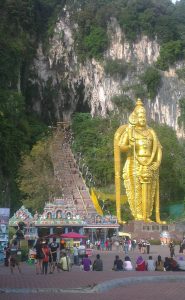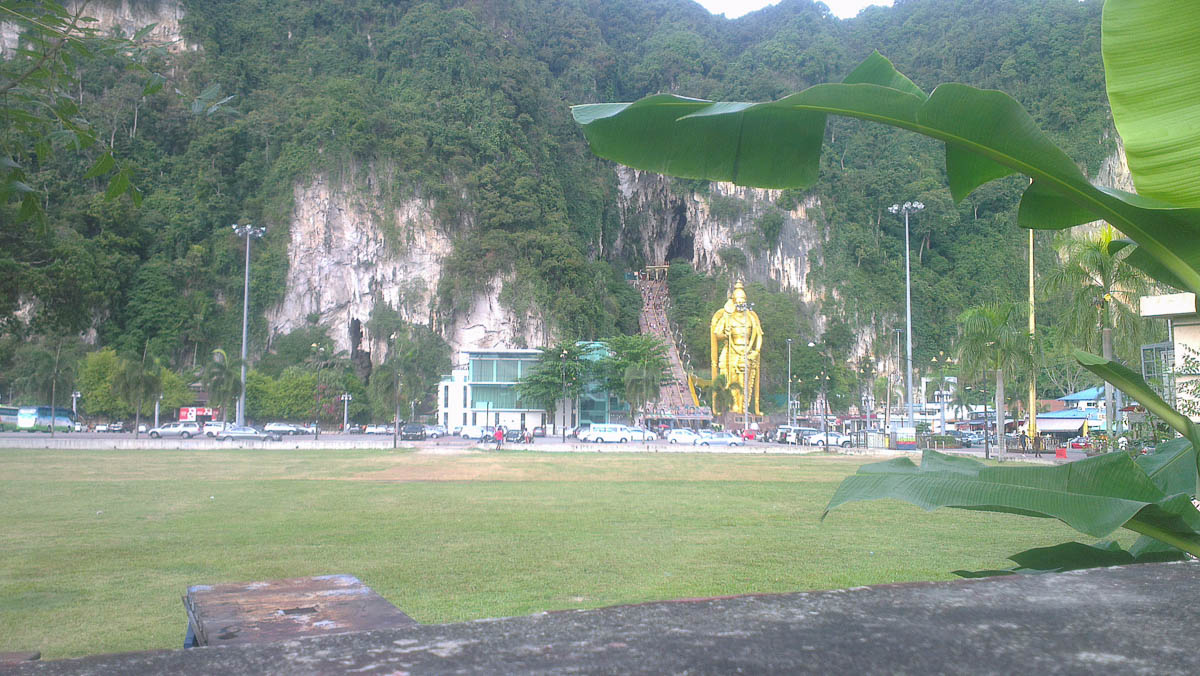Malaysia is a country with a mix of communities from all over the world, but principally people from the south and south east asian region who’ve been arriving for hundreds of years, bringing with them their cultures and best of all, food. The diversity of Festivals celebrated across the country is probably one of the widest in the world (and gives the population lots of public holidays) and visitors are encouraged to join in. Coming up this year on 9th February is Thaipusam, a Hindu festival celebrated by the Tamil community across the region. In Malaysia, this means anywhere there have been lots of rubber estates where Southern Indian workers came to earn a living, mostly in the western side of Peninsula Malaysia, from Penang to Johor.
The Festival of Thaipusam
As the festival follows a lunar calendar, it is celebrated on the full moon in the Tamil month of Thai and the date changes every year. Although it falls on 9th February in 2017, it will be most likely (TBC) fall on 31st January in 2018.
The celebration is held as tribute to the Hindu god of war, Lord Muragan, who is said to have killed three evil demons in in a display of courage and wisdom. The festivities surrounding the festival are colourful and boisterous, with bright colours, body piercing kavadis and the breaking of coconuts as the chariot carrying Lord Muragun’s statue makes its way to the temple the day before the festival.
Devotees carry a offering as they accompany the statue to the temple. This may be either a pot of milk or more spectacularly, a colourful kavadi, which may have multiple hooks attached to the devotee’s body, as they seek blessings, favours or help to improve as a person.
In Kuala Lumpur, the chariot leaves Sri Maha Mariamman Temple in Jalan Tun HS Lee in the late evening of 8th February, proceeding through the city streets as it makes its way to the Sri Subramaniyar Temple in Batu Caves. On the actual day of the festival, the devotees will carry their pots of milk and kavadis up the 272 steps to the temple in the cave. In Penang head to the Arulmigu Balathandayuthapani Temple, off Jln Gottleib. This year two chariots will come from different temples in George Town.
Both the procession and the daytime events are colourful and loud and offer the visitor an experience to remember.



Getting there
There will be a lot of people! Up to a million people participate in this annual festival across the various locations, including thousands of tourists. Most will be in Kuala Lumpur or Penang and if you’d like to join in the fun and colour at Batu Caves, the easiest way would be to catch the train. KTM Komuter will offer direct train services from Port Klang, Rawang and Seremban to Batu Caves over a three-day period 8th – 10th February, for Thaipusam 2017. In Penang, Check the Rapid bus timetable for extra services.
The service will be available from 10.30pm on Wednesday evening to 5.30am on Thursday and on until 5.30am on Friday, with over six hundred trips available. This special Thaipusam service will supplement the normal service to Batu Caves during the day. Expect a train frequency of between 15 minutes during peak hours and 30 mins at other times.
The station is normally about a five minute walk from the station, but due to the crowds, may take longer.
Staying safe
With an expected ridership of about half a million passengers over the three days, added to those who make their way there by other means, it will be very crowded. At least a million visitors are expected to Thaipusam gatherings in Kuala Lumpur and Penang.
Personal space will be limited and if you are a visitor,
- don’t take young children
- don’t wear or carry valuables or jewellery
- be careful of your cameras, phones and easily lost belongings
- wear a money belt and keep only a small amount of cash
- If you carry a backpack, keep it small and use it to carry plenty of water and perhaps a light snack.
Cultural observances
This is a religious festival, so please respect those who are participating.
- Be respectful when taking photos and if your subject is unwilling, back off
- Be careful photographing women and children
- Don’t touch or otherwise disturb the devotees
- Stay out of the actual procession route watch and take photos from outside the procession path
- Dress appropriately, pants below the knees, short sleeves
The temples are open at other times of the year as well. If you don’t like crowds, feel free to visit but remember to follow the directions on notices – e.g. removal of shoes etc.
images ©LL







This Post Has 0 Comments